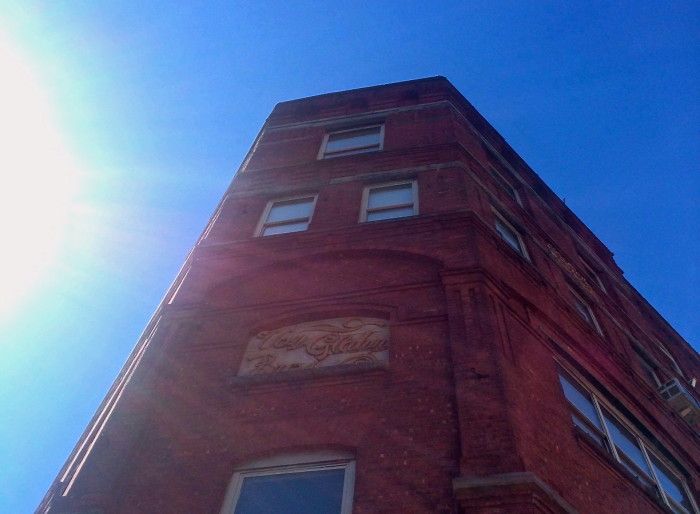For Iconic Clinton Hill Buildings, Is Change Welcome?

Two important area buildings have been the focus of real estate blogs as of late–the former Von Glahn Bros building (now called The Chocolate Factory) at 275 Park Avenue, and the former Broken Angel house on Downing Street. Each a notable address in its own way, these buildings remind us to question the importance of historic or otherwise significant structures in the context of concerns over adequate and affordable housing in NYC.
Harry Kotowitz and Howard Klaus of HK Organization purchased 275 Park, on the corner of Washington Avenue, for $68 million last week, according to The Real Deal. The 206,000 sq ft building, which contains 123 residential units for renters as well as Body by Brooklyn and Fresh Fanatic, was purchased in 2001 by previous owners The Chocolate Factory LLC.
The group undertook a major project by not simply converting the building, which had been vacant for roughly two decades, to habitable spaces, but by completely rebuilding much of it (you can see photos of the decrepit structure, and what was growing inside its walls, here).
Several blocks over, Brownstoner says, sales are close to launching at the 4 Downing condo conversion. The site, which was bought by developer Alex Barrett in January for $4.1 million, is likely better known to locals as the former location of Broken Angel–the whimsical home of artist Arthur Wood and his late wife, Cynthia.
The building, constructed in the 1880s, was reportedly bought by the Woods for $2,000 in 1979 and later fitted with cathedral-esque details–some of which did not sit will with the Department of Buildings. Broken Angel had a tumultuous several years starting in 2006 and was at one point slated for a condo development collaboration between Wood and developer Shahn Christian Anderson. However, as the site’s new owner, Barrett explained his plans included removing the work Wood and Anderson had completed.
The Broken Angel house has long been a point of contention among neighbors, some of whom viewed it as a work of art and important piece of Brooklyn architectural heritage, and some of whom viewed it as an accident waiting to happen. While those in the former group might be disappointed with the conversion’s seeming lack of character/corresponding homogenous appeal to believers in an ever-hyped Brooklyn real estate bonanza, those in the latter group will no doubt breathe a sigh of relief that, at the very least, the building at 4 Downing Street is now a safe one.
Considerations of history vs practicality can be applied to The Chocolate Factory, and the return on investment HK Organization will no doubt hope to gain from their purchase, as well: is the building’s restoration and structurally sound status something to be celebrated, period, or is that $68 million price tag a disturbing sign of the times for Brooklynites growing closer to being priced out?



